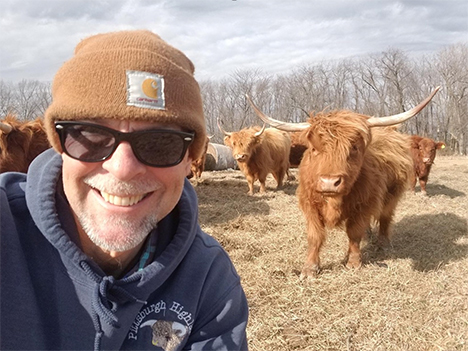This is a common bumper sticker these days; but what does it mean? It’s simple really. Explained another way, it suggests knowing exactly where your food is from and how it is produced – farm to plate.

For most folks’ food comes from the grocery store, most of it in cans, boxes, bags or bottles. Much of the food we eat is processed and packaged in a factory. Yes, a factory! The “farm fresh” product you bought today for dinner tonight began its journey on several farms somewhere before making its way via processing and handling facilities to a packaging and distribution facility and finally to the store shelf. The amount of fossil fuels needed just for transport alone would run our farm for weeks!
Since we primarily raise beef cattle, let’s focus on that sector. Most of the beef consumed in America is produced via the commodity markets. That means that several hundred thousand cattle that have been fattened on a farm feedlot are sold to a processor and shipped to a larger feedlot where they are fed fat-inducing grain rations prior to slaughter in a facility that employs hundreds of people. The resulting product is mixed and packaged for consistency so that every steak looks much like the next and tastes the same. Along the way flavoring and preservatives are added so they taste even better and last longer before transport to grocery stores in often far-away places. This journey might take weeks to accomplish and leaves behind a carbon footprint that rivals entire towns. The processors are unlikely to invite you for a tour of the facilities anywhere along the way. Welcome to the industrial food complex.
It is our stated goal to do just the opposite. Our cattle are born on the farm and raised there on grass until the day we load ‘em up for a short trip to a family-owned butcher facility where they are killed as humanely as such a process allows. The resulting beef carcass will hang for a minimum of 14 days before it is cut to our specifications and vacuum sealed and frozen on site. When finished we pick up the beef and sell it directly to you. No factories, tractor trailers, trains, conveyers, mixers, or feedlots involved.
Not only do we invite anyone interested to come to the farm and see what we do; we strongly encourage it. Through farm tours and rental of our on-farm tiny home (Highland House), we do our best to accommodate folks (customers or not) interested in knowing more about sustainable farming and direct-to-consumer production. In short, to “know their farmer.”